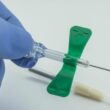They were less than a dozen in total, all outstanding scientists, serious doubters of the conventional wisdom that Darwinism was proven fact. All highly credentialed, they were American and foreign nationals, having in common a dissatisfaction with the accepted belief that the theory of Darwin-Evolutionism completely explained the origins of life, and was established scientific fact. Yet that is what they had all been taught – and what they knew was still being taught – even in advanced biology curricula. Michael Behe, world-renowned biologist from Lehigh University, expressed his dismay (anger) at having completed a doctoral program without having ever been exposed to the solid arguments against conventional Darwin theory that was presented in a book by Michael Denton, ” Darwin in Crisis”. Dr. Dean Kenyon, Professor Emeritus of Evolutionary Biology from San Francisco State University was there, as were Drs. Paul Nelson, Stephen Meyer, William Demsky, Jonathon Wells, Jed McCosko and Scott Minich – biologists, chemists, philosophers.
They discussed the ramifications of modern laboratory equipment such as the electron-micrograph with 50,000-times magnification of living cells – unknown technology until recently, and the advanced knowledge in many related fields which raised substantive challenges to the century-and-a-half-old Darwinism – all ignored by the popular media, courts, colleges and the public. Through their studies and personal experimentation, these scientists had all come to question the conventional belief system of Darwinism, and most certainly disagreed that it was proven science. In an unlimited atmosphere of free expression, they then exchanged ideas and concepts, theoretically exploring the mystery of life – including all rational scientific options.
Later, many would describe the gathering as a defining moment in their technical lives.
Charles Darwin
They started with Charles Darwin, who in 1831, during a five year voyage of exploration, spent a month on the isolated Galapagos islands, finding unique animals, plants and birds, differing from any seen elsewhere. Among the latter he discovered thirteen species of finches, with varying shapes and sizes of beaks, which, twenty-five years later in his revolutionary book “On the Origin of Species”, became the center-piece of his theory. His theme was that time and random-chance-mutations had occasionally provided a natural advantage for obtaining seed-foods in various localities with differing plant life – which had, over time, resulted in the optimization of the various beak shapes relative to a particular local food source. That was the significant conclusion from his observations – slight variations in beak shape during generations, initiated by random happenstance mutations, but providing beneficial advantage in the competitive struggle for existence by a functional improvement, would gradually result in an optimized beak-shape for a specific source of food. There was no need for “intelligent” guidance by a supreme being – Darwin thenextrapolated his thesis beyond the finch’s beak-shape optimization – to major variations of all basic life forms of animals, drastic physical changes in appearance and function which improved chances for success in the competition for survival. Darwin ‘s terminology: “natural selection via survival of the fittest.”
As the scholars and scientists reviewed Darwin ‘s words, “.. cannot take a sudden leap, but must advance by short and sure, but slow steps”, they noted what he had also said (and what his supporters never seem to acknowledge), “However, if it could be demonstrated that any complex organism existed which could not possibly have been formed by numerous successive slight modifications, my theory would absolutely break down.” (Emphasis added.)
Bacterial Flagellum Motor,
Sparking great interest were well-known items from today’s science, a thimble-full of cultured organic liquid containing billions of single-celled bacteria, each packed with complex circuits and microscopic molecular “machines”. The common bacterium, propelled by its rapidly rotating whip-tail flagellum, was analyzed in detail. “Just like an outboard motor”, commented Dr. Behe. Dr. H. Berg of Harvard had termed it “the most efficient motor in the universe.” Dr. Scott Minich with two decades of study of the phenomenon, described it: “.. rotates at 100,000 rpm, stops in a quarter turn then rotates in the opposite direction, while constantly receiving and processing inputs from the environment for obstacle avoidance.” He explained that detailed examination of the microscopic mechanism disclosed component parts and functions analogous to the optimized mechanical complexity of a standard out-board-motor engine-propeller system.
As an approach to their scientific evaluation of the whipping tail, the concept of “irreducible complexity” was discussed. Using the common mousetrap as an analogy, it was very clear to all – five components: a bait-holder; a capturing (or killing) mechanism; a hold-back device; a trigger device; and a platform to which all elements are fastened in proper relationship. Of great significance to the scientists were three specific Darwinian factors, which should be applicable to living entities:
- until all elements of a system are present and functional, the system will not operate;
- until the system works, the non-functioning elements are not a benefit but a hindrance to the entity’s survivability; and
- by Darwin ‘s own theory of natural selection, such non-beneficial appendages would be eliminated in follow-on generations.
The complex marvel of function as shown in the microscope was broken down into the analogous and numerous elements of a common motor-propulsion system – forty parts, equivalent to rotor sections, drive shaft, stators, brakes, flexible joints, etc. (plus an additional feed-back sensor). Each part of such mechanical systems, with modern competitive technology, is specifically engineered and designed for maximum overall operational efficiency – in stark contrast to Darwin’s theory of random-chance mutations, small, accidental steps, (somehow) continuous generational improvement via advantageous overall functioning. The visual evidence of the whipping-tail was obviously and completely incompatible with Darwin ‘s theory. To their rational minds, the theory of small changes by happenstance, which somehow fortuitously combine to achieve a wonderment of operational complexity and efficiency was totally unacceptable by any scientific standard. It was not just a challenge to Darwin- Evolutionism theory – it was a shattering of it!
Inference to the Best Explanation,
They were scientists, searching for understanding. While Darwin’s theory was brilliant and clearly applicable at the sub-class level (for finch beak shapes – or skin-colorings for bears or humans – optimizing the amount of Vitamin D absorption for different locale sun-exposures, either deleterious or beneficial), for the basic and initial origin of living entities, however, the analogy to the outboard motor was inescapable. The end result, by logic, could only be achieved by end-objective “intelligence”, driving specific detailed “design-engineering” elements.
The methodology of Science is specific with regard to acceptance of the “inference to the best explanation”. With Darwin’s theory clearly inadequate and absent other feasible theories, the alternate concept – first introduced by Behe in his book “Darwin’s Black Box” – was firmly selected by the group of scientists as the best possible explanation for the origin of life forms – “intelligent design”!








